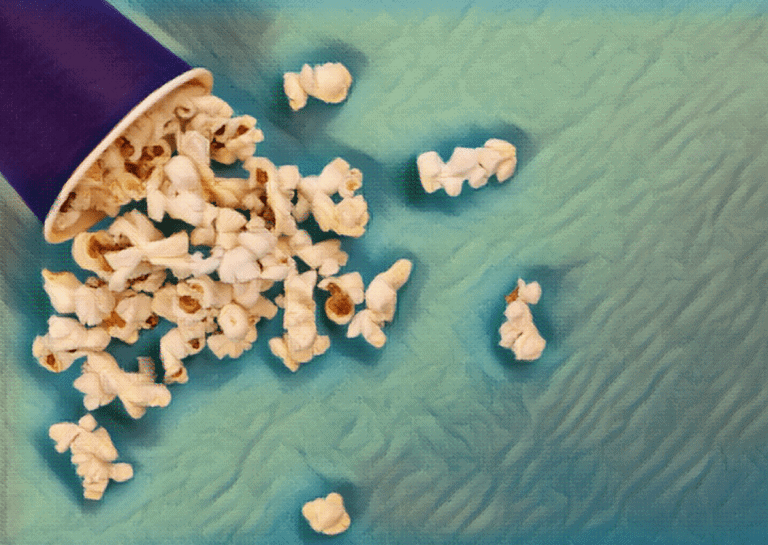When it comes to your child, safety and nourishment are among the top concerns when it comes to their health and well-being. As they get older, their needs change as they develop, with each age presenting new considerations and challenges for a parent. Among those challenges is knowing when a kid can be introduced to eating new foods. Even when they’re eating solid food, there are still snacks that are a choking hazard. In this post, we’ll answer the question of whether or not toddlers can eat popcorn, address other common snacks’ safety, and how to keep your child safe in case of a choking emergency.
Table of contents
Can a toddler eat popcorn
The American Academy of Pediatrics recommends not letting children eat popcorn until they’re over four years old. Popcorn is a notorious choking hazard for young children. The shape and texture of the kernels make it easy for the snack to get caught in children’s airways. That’s why the AAP guideline says kids under four shouldn’t have any until they’re four. At that age, their chewing and swallowing skills are much more developed, and are far less likely to choke on those trickier foods.
Other foods on the AAP list of things children shouldn’t eat until they’re older are:
- Hot dogs
- Nuts and seeds, like peanuts
- Chunks of meat or cheese
- Whole grape
- Hard or sticky candy
- Chunks of peanut butter
- Chunks of raw vegetables, like carrots
- And chewing gum
Reducing the choking risk
According to the AAP, food accounts for 50% of choking-related incidents. As your infant gets older and starts getting introduced to solid food, it’s important to keep these safety tips in mind to reduce the risk of food hazards for your child.
Always cut up food into small pieces no larger than half an inch. Supervise meal time, and encourage your child to chew their food thoroughly as they learn. Make it a rule that your child should always be sitting down to eat, and should never run, play, or lay down with food in their mouth. Those are all simple and effective strategies to reduce the risk of food-related choking.
How to handle a choking emergency
Unfortunately, even with thorough planning and following every safety guideline, the risk of choking is never completely ruled out. So, how do you stay prepared for the worst-case scenario just in case? What can you do to keep your family safe and healthy in case of an emergency? Knowing what to do can make a drastic difference in the outcome of a choking-related emergency. When food or another small object gets lodged in the airway, also known as the trachea, it blocks oxygen from reaching the brain. It takes about four minutes of oxygen blockage for permanent brain damage or, worse, death to occur.
If your child is choking but is still able to cough, the AAP recommends not doing anything yourself. Coughing is more effective than any medical intervention you could do on your own. However, they still recommend calling 911 so your child can be transported to the hospital and treated. In the case that your child can’t breathe or you notice signs like pale skin or their cough is weak, then they need immediate attention. First, you should always have someone call 911. Then, you can focus on emergency procedures. The Heimlich maneuver is recommended, which involves abdominal thrusts to help clear the airway blockage.
If your child is unconscious, you can also use the tongue-jaw lift. This method of clearing their airway looks like pressing down on their tongue while holding their jaw in the other hand. It gives more access to what could potentially be causing the choking and give you the opportunity to carefully remove it. But be careful because there’s also a risk of pushing it further down and creating more of a blockage. In worst-case scenarios, CPR is performed when no pulse is detected. This is a resuscitation effort and, hopefully, not something you ever need to use. But it’s good to be prepared in case of an emergency in what to do before professionals arrive on the scene to help.
Final takeaways
Popcorn is on the short list of foods that aren’t safe for toddlers under the age of four. The consistency of the snack makes it a dangerous choking hazard for young children. When it comes to food safety, there are plenty of resources from the AAP and medical professionals that can help you make wise choices as your child is introduced to more foods.
Always remember to supervise their meals, cut up their toddler-friendly food into small bites, and encourage thorough chewing. These preventative guidelines will help your child eat food safely as their skills are still developing. And should an emergency arise, be prepared by knowing what to do. There are classes and resources available that can train parents on how to respond should their child start to choke.
